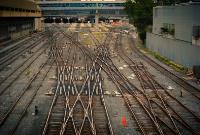 Add My Company
Add My Company
Sign In

In previous blog posts, we've looked at the pros and cons of selective and wave soldering. Both techniques have several advantages over traditional hand soldering, in terms of speed, consistency and quality. So, we thought it would be useful to focus in on one particular technique in more detail and for this post have chosen selective soldering.
Although there are clear benefits from investing in this type of equipment, there are also a number of considerations to make prior to purchase. In this post, we will look at 11 points that require further thought, to ensure you select the right piece of selective soldering equipment for your products.
1. Size
What printed circuit board (PCB) sizes do you need to process? As well as the single PCB, you should consider whether it will need to be in a panel of two or more to make production more efficient and cost-effective. What size "waste" or border will be required around the PCB for handling through the machine? Are pallets going to be required to hold the PCBs in place through production? All of these options add to the overall size of the PCB that the machine will need to handle.
2. Floor space
How much floor space do you have available? Selective soldering machines can vary from about one metre to several metres long, depending on the configuration. Board handling and storage around the machine also needs to be considered as it will be required to carefully load and unload the populated PCBs before and after soldering.
3. Machine maintenance
Selective soldering machines can be relatively low maintenance, but if, for example, you want to run the machine automatically for a whole production shift with no human intervention, then this might be a consideration. Some systems require more frequent care for optimal results so selecting the right machine for your "typical" range of products and usage is vital.
4. Solder pots
How many solder pots will you need? For example, you might want to set the machine up to have both leaded and lead-free solder available, to minimise changeover times between jobs. Or you might want two or more soldering stations in your system to help maximise throughput.
5. Solder nozzles
What solder nozzle sizes and types might you need? While these are generally quick and easy to change over, limiting the number of options here will improve throughput and cost. Smaller or extended nozzles can be good for getting in between components, whereas larger ones are generally better for faster soldering. There is a surprising range of possibilities, from 1.5mm diameter up to "wide-wave" nozzles, with various lengths and types of flow produced.
6. Nitrogen supply
Selective soldering requires nitrogen with a high level of purity. Depending on how much the machine is going to used, and any site restrictions, then providing a nitrogen generator fed by compressed air may be preferable to an external storage tank.
7. Flux
Systems typically offer fluxing at the start of the process, but if it's a long soldering process you might need to consider fluxing again at a later stage.
8. Pre-heating
A typical system may provide top and bottom heating of the PCB after fluxing and before soldering. Depending on the PCB assembly, you might need to consider further heating later, if the heat generated by the soldering process proves to be insufficient - and particularly if you have multiple soldering or fluxing stages.
9. PCB and assembly handling
Systems can be manually loaded and unloaded, or designed to be "in-line". For longer, automated runs it might be most efficient to add board stackers at the input and output stages or, alternatively, conveyors may be better if the PCBs are going to have components loaded in parallel with the soldering process.
10. Optional extras
Systems are often available with a host of extra features that may be optional on some and standard on others. For example, fiducial recognition or the ability to measure and compensate for bow or twist in the PCB may or may not be useful.
11. Configuration
Will you want to change the configuration of the machine in the future? For example, adding further solder stations, fluxing or pre-heating? If so, a modular system might be more suitable than an "all-in-one" solution, though it might cost a bit more.
So, for what might seem at first glance to be a fairly simple process of specifying and then ordering a piece of capital equipment, there is quite a lot to consider, to ensure you get the right machine for your business. While some of the answers to the above might be easy to answer, many won't, and extensive trials might be needed to determine the system that best fits your needs.
For more information on 11 points to consider when buying selective soldering equipment talk to ESCATEC Mechatronics Ltd
Enquire Now
More Blogs
List your company on FindTheNeedle.

